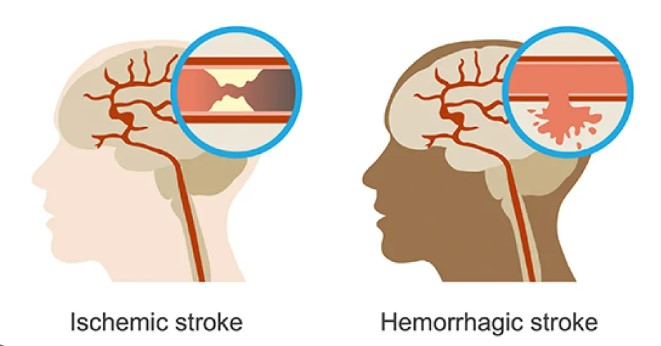
What is a Stroke?
A stroke (also known as cerebrovascular accident) occurs when an area of the brain loses access to blood because of the clottage or rupturing of a blood vessel that leads to the brain, resulting in brain cells dying.
An ischemic stroke occurs when there is a blockage or obstruction in a blood vessel that supplies blood to the brain. The blockage is usually caused by a blood clot that forms in a narrowed or damaged artery. This results in a reduction or complete cessation of blood flow to the affected area of the brain. Ischemic strokes are the most common type of stroke, accounting for about 85% of all cases.
A hemorrhagic stroke occurs when a blood vessel in the brain ruptures and bleeds into the surrounding brain tissue. This can happen as a result of high blood pressure, a ruptured aneurysm, or a weakened blood vessel. The bleeding can put pressure on nearby brain tissue, leading to damage or death of brain cells. Hemorrhagic strokes are less common than ischemic strokes but tend to be more severe and have a higher mortality rate.Why is Early Stroke Detection Important?
Early stroke detection is important because if stroke is able to be detected early, in the case of an ischemic stroke, tissue plasminogen activator (TPA) can be administered to dissolve the blood clot. If it’s given within a 3 hour time window, the chances of survival are greatly increased and further complications are reduced. For hemorrhagic strokes, early detections allows for surgeries to be performed, such as removing blood to relieve pressure on the brain and preventing further blood leakage through clamping of the aneurysm or performing coil embolization.